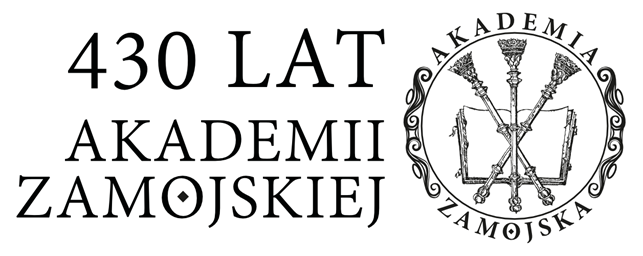Przyczynek do usystematyzowania lokalizacji fortyfikacji polowych Wermachtu w 1944 r. od Strzyżowa po Zagórnik (lewy brzeg Bugu, styk powiatów: hrubieszowskiego i chełmskiego)
Marian Głowacz
Zbigniew Mazur
Janusz Panasiewicz
Abstrakt
Plan linii obronnej na Bugu opracowali wiosną 1944 r. niemieccy sztabowcy i topografowie, autorzy artykułu przyjęli za cel zlokalizowanie jej schronów, baraków, strażnic i wież obserwacyjnych w terenie. Podali współrzędne GPS dla 22 niemieckich dzieł obronnych w okolicach miejscowości: Strzyżów, Rogalin Dolny, Zosin, Łuszków, Wieniawka, Horodło, Poraj, Bereźnica, Matcze, Zagórnik, oraz dokładny opis schronu drewniano-ziemnego w Kolonii Poraj Marcinówka. Postulują rozszerzenie badań i nadzór archeologiczny nad pozostałościami artefaktów i amunicji. Linia schronów miała uszczelnić pas nadbużny przed przenikaniem ze wschodu oddziałów partyzanckich, ich budowę nadzorował 5. Policyjny Galicyjski Pułk Ochotniczy SS złożony ukraińskich ochotników, a także SS Galizien. Według Stanisława Czekanowskiego z Dziekanowa, zarządcy Towarzystwa Rolniczego Hrubieszowskiego, autora cytowanych pamiętników, spodziewano się atakowania linii Bugu przez „artylerię bolszewicką”. Czekanowski pisał też o postrachu, jaki siał w tym czasie Ukraiński Legion Samoobrony. Autorzy przypominają, że pierwsze posterunki wartownicze na linii demarkacyjnej ZSRR i III Rzeszy na Bugu utworzono w 1939 r., ale szybko powstały na niej punkty przerzutowe, na omawianym terenie w Kolonii Bereźnica (komendant Włodzimierz Malczewski ps. „Amator”) i w Horodelskim Pogórzu. W 1944 r. służyły m.in. do zaopatrywania w broń i sprzęt 27. Wołyńskiej Dywizji AK. Przez Bug przeprawiali się uciekinierzy przed rzezią wołyńską.
Słowa kluczowe:
linia obronna na Bugu, Kolonia Poraj Marcinówka, formacje ukraińskie, Włodzimierz Malczewski ps. „Amator”, Stanisław CzekanowskiInne teksty tego samego autora
- Janusz Panasiewicz, Przyczynek do etymologii nazwy wsi staszicowskiej , Archiwariusz Zamojski: Tom 13 (2014)
- Janusz Panasiewicz, Onomastyczna twórczość mieszkańców wsi hrubieszowskich , Archiwariusz Zamojski: Tom 17 (2019)
- Marian Głowacz, Zbigniew Mazur, Janusz Panasiewicz, Znaleziska pod Horodłem , Archiwariusz Zamojski: Tom 20 (2022)
- Janusz Panasiewicz, Przybliżenie lokalizacji zamku hrubieszowskiego – nowe wskazania w „Opisaniu statystycznym miasta Hrubieszowa” z 12/24 maja 1860 r. , Archiwariusz Zamojski: Tom 19 (2021)
- Janusz Panasiewicz, Ogród i sad w inwentaryzacjach wsi Brodzicy z 1924 roku , Archiwariusz Zamojski: Tom 14 (2015)
- Janusz Panasiewicz, Umowa kupna-sprzedaży dóbr Hrubieszów z 30 marca 1800r. , Archiwariusz Zamojski: Tom 5 (2006)
- Janusz Panasiewicz, Okoliczności funkcjonowania Przedsiębiorstwa Państwowego „Polskie Koleje Państwowe” na Zamojszczyźnie , Archiwariusz Zamojski: Tom 15 (2017)
- Janusz Panasiewicz, Hipoteka miasta Hrubieszowa , Archiwariusz Zamojski: Tom 15 (2017)
- Janusz Panasiewicz, Wygony hrubieszowskie , Archiwariusz Zamojski: Tom 16 (2018)
- Janusz Panasiewicz, Umowa mieszkańców hrubieszowskiego przedmieścia Pogórze z pastuchami o pasienie trzody z 1826 r. , Archiwariusz Zamojski: Tom 18 (2020)
Szczegóły
Bibliografia
Statystyki
Autorzy
Zasady cytowania
Licencja

Utwór dostępny jest na licencji Creative Commons Uznanie autorstwa – Bez utworów zależnych 4.0 Międzynarodowe.


 Język Polski
Język Polski
 English
English




